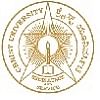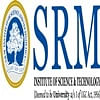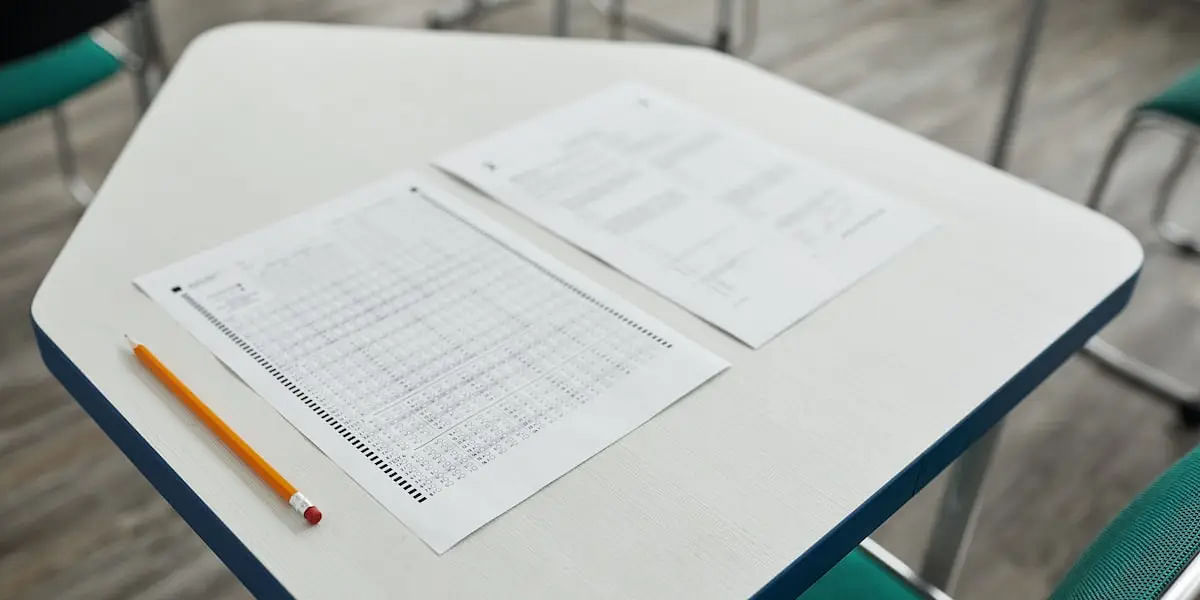NCERT Books for Class 10 Science, all subjects are available in PDF. Students can refer to the books online while preparing for the exams.
NCERT Books for Class 10 Science: Class 10 is the foundation for most students' future education. It is a critical year for pupils as they take their first board exams. As a result, if students want to perform well in their board exams, they must completely understand all of the themes and subjects covered in Class 10 utilising the NCERT books.
The book, written by subject matter specialists, focuses on providing extensive chapter-by-chapter explanations of the numerous topics and concepts covered in the Class 10 CBSE Science Syllabus.
Students utilize the NCERT book for Class 10 Science to study and prepare for their board exams. Class 10 teachers use NCERT books to develop assignments and homework for their students.
NCERT Books for Class 10 Science in English, Hindi, Urdu Medium
Science, in general, is a lengthy subject for a student to prepare. It consists of various chapters in Biology, Chemistry, and Physics, respectively, and it can become a tough task to conquer all of them. If a student plans to learn the subject through rote learning, that might not work as Science is a very vast subject. Only with understanding, a student will learn the concepts.
In addition, students need to read each line, and they need to understand it before they proceed to the next topic; otherwise, it will be too hard for the students to cope with the rest of the topics.
Below are the PDF links to download the complete NCERT Books for Class 10 Science.
| Mediums | Books |
| English Medium | Download NCERT Class 10 Science Book in English |
| Hindi Medium | Download NCERT Class 10 Vigyan Book in Hindi |
| Urdu Medium | Download NCERT Class 10 Science Book in Urdu |
Also Read: CBSE Class 10 Maths Viva Questions with Answers 2024-25
NCERT Books for Class 10 Science in English
Science is an important subject for the student, as stated earlier. Therefore, NCERT has divided the chapters keeping in mind the student's capability to grasp knowledge. The NCERT Class 10 Science Book has a total of 16 chapters.
Candidates can download the NCERT class 10 Science book in English using the link below.
| Particulars | PDF Link |
| NCERT Book for Class 10 Science in English | Download Here |
NCERT Books for Class 10 Science in Hindi
If a student prefers to read a book in Hindi, we have compiled a list of chapters in the same way we have done for the English medium book, but the only difference is the chapters are all in the Hindi language.
Download the NCERT class 10 Vigyan book, i.e., class 10 Science book in Hindi using the link below.
| Particulars | PDF Link |
| NCERT Books for Class 10 Science in Hindi | Download Here |
NCERT Books Class 10 Science in Urdu
NCERT has released the class 10 Science books in Urdu medium, including the English and Hindi mediums, to make it accessible for students all around India. The Urdu medium books also comprise 16 chapters with book back exercises and fun activities for easy learning.
Download the NCERT class 10 Science book in Urdu using the link below.
| Particulars | PDF Link |
| NCERT Books Class 10 Science in Urdu | Download Here |
NCERT Books for Class 10 Science Chapter-wise Description
In the NCERT chapter description section, students can read the short descriptions of each chapter separately for the Physics, Chemistry, and Biology chapters. The first five chapters of the book include Chemistry, and in chapters 6 to 9 and 15, 16, students study Biology (Botany and Zoology). Whereas in other chapters 10 to 14, students learn Physics.
Here are the short descriptions for Physics, Chemistry, and Biology chapters.
Chapter 1 - Chemical Reactions and Equations
Chapter 1, Chemical Reactions and Equations, covers the introduction to Chemistry topics, and the chapter also covers how the chemical equations are formed and how to write named reactions. Besides, it also teaches the students about balancing equations, a complete chemical equation representing the reactants, product, and physical states symbolically.
Chapter 2 - Acids, Bases, and Salts
Chapter 2, 'Acid, Bases, and Salts,' give students the fundamental concepts of acids and bases. The chapter deals with various reactions and how to differentiate an acid and a base. Besides, the chapter also talks about how salts play a significant role apart from acids and bases.
Chapter 3 - Metals and Non-metals
Chapter 3 is another fundamentals concept in Chemistry, where students study how to separate metal from a non-metal and all about conductor and insulator. Besides, the chapter also studies various properties like sonorous, shine, toughness, etc. The chapter covers the physical and chemical properties of elements, which is classified as metals and non-metals.
Chapter 4 - Carbon and its Compounds
In chapter 4, students get into detail about Chemistry's most vital element, Carbon. Carbon may be a versatile component that forms the premise for all living organisms and plenty of the items we tend to use. Carbon's large form of compounds is attributable to its tetravalency and, therefore, the property of catenation that it exhibits.
Chapter 5 - Periodic Classification of Elements
In Chapter 5, Periodic Classification of Elements is where remembering the periodic table comes into play. Students often neglect to do this task because they think that it is unnecessary. Instead, one must learn how to remember all of the elements in the table row-wise. Elements square measure classified on the premise of similarities in their properties.
The Modern Periodic Table elements are arranged in 18 vertical columns called groups and 7 horizontal rows called periods. Therefore, elements show regularity of properties and atomic size, valency or combining capacity, and metallic and non-metallic character.
Chapter 6 - Life Processes
Chapter 6 is the first chapter of biology, and it deals with the basics of how life was first formed on our planet and about various processes that are going on in our daily lives that we aren't familiar with. Movement of assorted sorts is taken as a sign of life. The maintenance of life needs processes like nutrition, respiration, transport of materials within the body, and excretion of waste products.
Chapter 7 - Control and Coordination
Chapter 7 is related to the previous chapter, and it deals with how organisms control their respective systems. The chapter details how the human nervous system works, and we get to know that it comprises neurons connected in long chains to help pass messages around. Control and coordination squares measure the functions of the nervous system and hormones in our bodies.
Chapter 8 - How do Organisms Reproduce?
Chapter 8 is one of the most important chapters of biology, and it plays a key role in our lives. This is because life on our planet is due to one sole reason: the reproduction of organisms.
Here we deal with this particular process in detail, and we get familiar with how this process happens. There are two types of reproduction that can happen. These are asexual and sexual modes of reproduction. The sexual mode is again divided into two classifications: plants and humans, respectively.
Chapter 9 - Heredity and Evolution
Chapter 9, Heredity and Evolution, is related to the previous chapter, so students need to do it as thoroughly as possible. Here we deal with various Mendel traits and the crosses that are possible between genes. The chapter may get confusing, but you need to practice heredity, and it should not be a problem.
Chapter 10 - Light Reflection and Refraction
Light Reflection and Refraction, chapter 10 is the first chapter of the physics part of the book. This chapter is fairly simple as it deals with how light reflects off a surface. Most of your students must be knowing what a pinhole camera is and how it functions.
So it is related to that as you learn about various rules governing reflection. There is another topic called refraction, and this mainly deals with a prism and how the light gets refracted as it passes through water.
Chapter 11 - The Human Eye and the Colourful World
Chapter 11 is one of the most important chapters in physics, and it deals with the fundamentals of our eyes. This chapter talks about the various parts present in the human eye, like the retina, pupil, lens, etc.
We also get to know about certain defects that the human eye has, like nearsightedness and farsightedness, for which we need to wear spectacles to enhance our vision, and it makes us easier to see. The attention to focus each close to and distant objects, by adjusting its focal distance, is termed the accommodation of the attention.
Chapter 12 - Electricity
Electricity, Chapter 12 is very useful, keeping the board exams in mind. There are various basic formulae that a student must remember, so students need to keep practising numerical as physics is a scoring subject. The basic meaning of Electricity is that a stream of electrons moving through a conductor constitutes an electrical current.
The direction of the current is taken opposite to the direction of the flow of electrons, and the SI unit of electric current is ampere. There are more terms that we will come across as we get into the chapter.
Chapter 13 - Magnetic Effects of Electric Current
Chapter 13 is another important chapter, and the concepts we study here are used in our lives for a long time. First, the chapter deals with the basics of what a magnet is and how it functions. Students already know that it consists of a north pole and a south pole, and we are sure all of you have used a compass, so you know how it works.
A compass needle is a small magnet. Its one end, which points towards the north, is called a north pole, and the other end, which points towards the south, is called a south pole.
Chapter 14 - Sources of Energy
Chapter 14 talks about the energy needed to increase our normal living. To fulfil our energy needs, we tend to try and improve the potency of energy usage and try to exploit new energy sources. We also have to be compelled to explore new sources of energy because traditional sources of energy like fossil fuels are at risk of obtaining exhaustion before long.
Chapter 15 - Our Environment
Chapter 15 comes towards the end of the book, but it comes under the biology part itself. Students should not take this chapter lightly as it involves many core concepts that are important from an exam of view. Here we get into what an ecosystem is and how important it is as all of life revolves around it. We also learn about how a food chain is formed and that it is part of life. Finally, towards the end of this chapter, we learn about how humans are harming the environment by polluting it, leading to global warming.
Chapter 16 - Sustainable Management of Natural Resources
Chapter 16, Sustainable Management of Natural Resources, is the end of the NCERT Class 10 Science Book, and it gives a good conclusion to this book. We get to know that the world functions because there are various resources available to us. But because we are using them too much, they are getting over it, which is a problem to mankind.
Chapter 16 is about how important it is to manage our resources using forests, wildlife, water, coal, and petroleum sustainably. We can cut back pressure on the setting by sincerely applying the maxim of Reduce, Reuse and Recycle in our lives.
Also Read: CBSE Class 10 Science Viva Questions with Answers 2024-25
Importance of NCERT Books for Class 10 Science
NCERT Class 10 Science Book provides students with detailed information about all of the topics and concepts studied in Class 10 Science, as per the CBSE syllabus. Students can use this book to clear up any doubts they may have concerning the Class 10 Science subject.
- Students can learn more about the topics studied in Class 10 Science.
- Assist in gaining a thorough understanding of class 10 science.
- Students find these textbooks highly useful during revision time.
- Students can use these books to self-analyse their performance and study accordingly.
- Students can expand their knowledge of the important topics.
- Homework and assignments are supplied according to the texts.
Also Read: How NCERT and CBSE are Different?









![Motilal Nehru National Institute of Technology, [MNNIT] Allahabad](https://media.getmyuni.com/azure/college-image/small/motilal-nehru-national-institute-of-technology-mnnit-allahabad.webp)

















